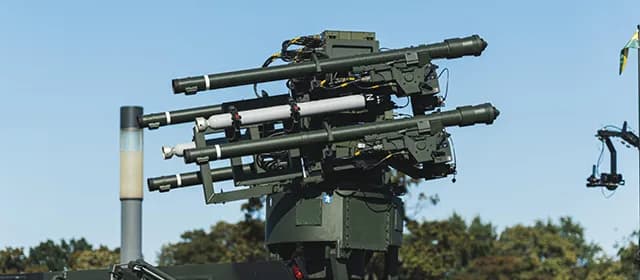Increasing adoption of electric vehicles (EVs) and autonomous vehicles (AVs) is reshaping many demand vectors in the automotive supply chain. Navigation lighting, comprising headlights, taillights, signal lamps, marker lights, and adaptive illumination systems, is likely to be significantly affected. Electrification and autonomy influence design, power budgets, functionality, regulatory requirements, and system integration.
Kings Research estimates that the global navigation lighting market size was valued at USD 37.9 million in 2023 and is projected to grow from USD 39.4 million in 2024 to USD 55.4 million by 2031, exhibiting a CAGR of 5.00% over the forecast period. This article analyzes how EV and AV trends alter navigation lighting demand, explores technical and regulatory implications, highlights evolving product strategies, and outlines future trajectories.
Trends in Electrification and Autonomy
Electrification accelerates globally. The U.S. Department of Energy’s 2025 Vehicle-to-Grid (VGI) report notes that EVs represented over 8 percent of new light-duty vehicle sales in 2023, amounting to about 1.2 million EVs sold (Source: www.energy.gov). Autonomous vehicle development remains an explicit federal priority. The U.S. Department of Transportation publishes a roadmap called Automated Vehicles 4.0 to coordinate research, regulation, and integration of AV technologies (Source: www.transportation.gov). These macro trends create conditions in which navigation lighting must adapt to new vehicle architectures, energy constraints, sensor ecosystems, and safety functions.
How Does Vehicle Electrification Influence Navigation Lighting Needs?
- Power Efficiency and Energy Budget
EVs operate under constrained energy budgets where every watt counts. In contrast to internal combustion engine vehicles, EVs cannot afford energetic inefficiency in ancillary systems. Navigation lighting solutions need to optimize luminous efficacy (lumens per watt) and reduce standby draw. Advances in LED, laser, OLED, and micro-LED technologies have become more attractive because they deliver higher efficacy and allow dynamic modulation.
Lighting systems in EVs may also integrate into the vehicle’s energy management strategies. For example, lighting control may reduce output under low battery scenarios or adapt brightness dynamically. Navigation lighting designers must support dimming, adaptive control, and seamless integration with vehicle energy control modules.
- Architectural Consolidation and Electrified Lighting Modules
EV platforms increasingly adopt centralized electrical architectures and multiplexed domains. Navigation lighting modules may migrate from individually powered components toward integrated lighting pods or zones. This consolidation reduces wiring weight and complexity, which aligns with EV goals of minimizing mass and maximizing efficiency. In addition, EVs often adopt 48 V or higher bus systems for auxiliary loads. Lighting modules must be compatible with these higher bus voltages or include a DC-DC conversion topology.
- Heat and Durability Constraints
EVs tend to dissipate less heat in the engine area, altering thermal environments around lighting enclosures. Designers must evaluate how reduced ambient heat affects condensate drying, lenses, and sealing durability. Battery electric systems sometimes expose components to different thermal profiles, requiring revalidation of materials and optics.
Effects of Autonomy and Sensor Integration on Lighting
- Sensor Coexistence and Illumination Control
Autonomous vehicles rely on sensor suites (cameras, LiDAR, and Radar) to perceive the environment. Navigation lighting must avoid interference (glare, reflections) that degrade sensor performance. Adaptive lighting systems may modulate beam patterns in real time to minimize sensor interference while maintaining road illumination and compliance.
AV navigation lighting may incorporate active light steering, pixelated LEDs, or matrix lighting to shape beams dynamically. This allows precise control of illumination zones, restricting glare while lighting specific spatial regions.
- Communication and Signaling Functions
AVs require communication with other vehicles, infrastructure, and pedestrians. Navigation lighting might evolve into signaling systems that convey state or intent. For instance, dynamic LED patterns might inform pedestrians of vehicle yield behavior or AV mode engagement. Designers must consider human factors, visibility, standardization, and coding of lighting signals.
- Redundancy and Fail-Safe Behavior
Autonomous systems demand robust reliability. Navigation lighting systems may require redundant circuits, self-monitoring diagnostics, and graceful fallback modes. The lighting function may play roles in sensor calibration, system diagnostics, or fail-safe signaling. Lighting modules must provide status feedback and self-check mechanisms integrated into the vehicle diagnostic network.
- Regulatory and Standards Implications
Federal Motor Vehicle Safety Standard 108 (FMVSS 108) regulates automotive lighting, signaling, and reflective devices in the U.S. Manufacturers must certify compliance under that standard. As navigation lighting becomes “smart” and adaptive, regulations may require updating to accommodate steerable beams, dynamic signaling, or AV-specific lighting modes.
Authorities may introduce new mandates for pedestrian visibility, adaptive illumination, or networking support. As AVs proliferate, standard bodies may define intervehicle lighting protocols. Lighting vendors must anticipate evolving regulatory frameworks and engage in standards development.
Impacts on Demand and Product Strategy
- Premiumization and Feature Differentiation
Navigation lighting may transition from commodity status toward feature-rich modules. Brands may differentiate via adaptive dynamic beams, pixel-level control, integrated indicators, sensor-friendly optics, or even communication lighting. This premiumization can raise average unit revenues for lighting suppliers.
- Increased Integration of Optical, Electronics, and Software
Demand for navigation lighting will require closer integration of optics, electronics, firmware, and control logic. Lighting vendors must transition toward system competency, combining LED driver ICs, sensor interfaces, diagnostics, and control algorithms. Suppliers that can deliver modular, intelligent lighting subsystems may gain an advantage.
- Volume Growth in Auxiliary Lighting
Auxiliary and accent lighting (daytime running lights, signature patterns, underbody lighting) may expand as EV and AV styling becomes a brand differentiator. Complementary lighting desire may expand overall lighting counts per vehicle.
- Aftermarket and Retrofit Opportunities
Legacy vehicles retrofitting EV or autonomy capabilities may trigger demand for upgraded navigation lighting modules such as adaptive LED units, sensor-friendly optics, or intelligent controllers. Retrofit markets may support early growth for smart lighting upgrades.
Challenges and Technical Constraints
- Power, Cost, and Complexity Trade-offs
Adaptive or pixelated lighting systems incur increased cost, electronics complexity, calibration overhead, and software validation. The value proposition must justify these costs in EV/AV margins. Control logic, sensors, and computing all add incremental cost and failure points.
- Thermal and Power Electronics Design
High-brightness modules must manage thermal dissipation. Driver ICs, supply circuits, and heat sinks must be compact and efficient. Consideration of electromagnetic interference, electrical noise, and voltage transients is essential in electrified architectures.
- Optical Design and Calibration
Beam shaping, glare suppression, transitions between zones, and lens design require complex optics. Adaptive modules must maintain regulatory conformity across states and jurisdictions. Dynamic calibration, aging, and alignment variability complicate design.
- Standardization and Interoperability
Lack of unified standards for adaptive signaling or AV lighting functions may fragment markets. Differing regional lighting laws may complicate product commonality. Lighting vendors must balance differentiation with compliance.
- Supplier Ecosystem Transformation
Traditional lighting suppliers must build competence in software, sensors, and electronic control. They must integrate cross-domain capabilities or partner with electronics and software houses. Supply chains must evolve from optical and housing to embedded systems manufacturing.
Future Trajectories and Outlook
Navigation lighting will evolve into intelligent, context-aware illumination systems. Pixel-level LED arrays controlled by AI will allow real-time shaping of beam zones for efficiency, glare control, and signaling. Light modules may communicate with vehicle networks, exchanging state or hazard information.
Cooperative lighting may emerge, where vehicles coordinate beacon or signal patterns to communicate platooning, lane change intent, or pedestrian priority. Infrastructure-integrated lighting (smart roadways) may synchronize with vehicle lighting to improve guidance and safety. Standardization bodies may adopt protocols for intervehicle light signaling. Regulators might mandate minimum adaptive lighting performance or pedestrian signaling via lights. Lighting systems may contribute to automated safety assurance or autonomous validation.
Lighting vendors will become system integrators. They must deliver optics, electronics, firmware, and diagnostics as integrated modules. AI, calibration, monitoring, and over-the-air updates will become integral. Retrofitting and upgrade kits may open new revenue streams. As EV and AV adoption spreads, owners of conventional vehicles may seek lighting modernization as part of modular autonomy or styling upgrades.
Conclusion
Electrification and autonomous vehicles exert a significant influence on navigation lighting requirements. Energy efficiency, architectural consolidation, thermal design, sensor compatibility, adaptive signaling, and regulatory evolution all drive changes in demand and design. Lighting suppliers must evolve into systems providers blending optics, electronics, firmware, and diagnostics. Although technical and regulatory challenges are substantial, the shift offers premiumization and feature opportunities. Intelligent navigation lighting may become an essential element of the EV/AV ecosystem, contributing to safety, communication, brand identity, and overall system integrity.




